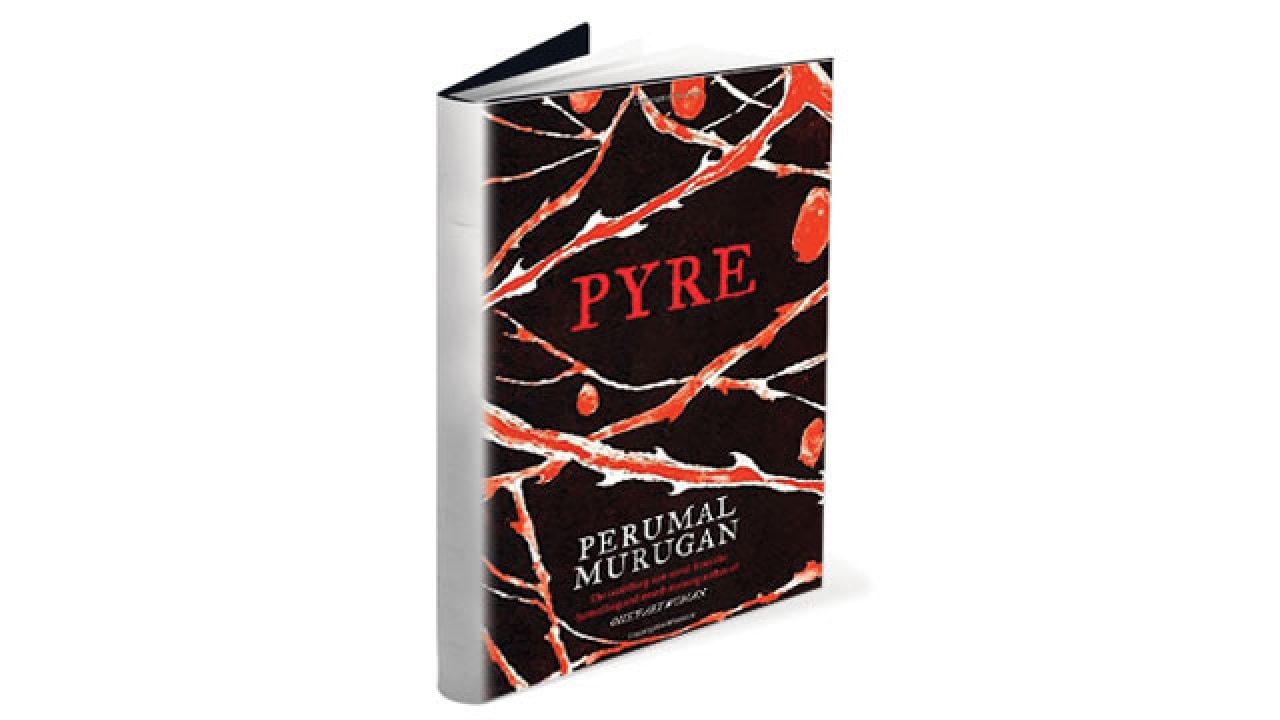
When a living writer announces his death, his readers are left to pick up his past works and recall with bitterness how a literary genius was smothered by his own people. And so it is with Perumal Murugan, who announced his death on Facebook in January 2015 when he had just acquired a significant following across the country, thanks to the English translation of his Tamil novel, Mathorubhagan (One Part Woman).
In Pyre, the English translation of his 2013 novel Pookkuzhi, Murugan trains his attention on caste and the strict enforcement of caste endogamy in rural areas. The protagonists, Saroja and Kumaresan, fall in love in a town, get married, and elope to Kumaresan's native village. Taking one look at the fair-skinned Saroja and her mannerisms, the villagers immediately conclude that she hails from a different caste, despite Kumaresan claiming otherwise. The couple find themselves ostracised by everyone, including Kumaresan's mother.
Murugan had dedicated Pookkuzhi to R. Ilavarasan, a Dalit youth from Dharmapuri, who was found dead on a railway track in 2013 after his marriage with a Vanniyar girl unleashed an orgy of caste violence. Surprisingly, there is no dedication to Ilavarasan in Pyre, which does not mention the caste of its protagonists. There are some cues available in the text for the discerning reader and natives, but English readers will ponder whether the Tamil original refrained from using caste names too. Considering the travails that visited Murugan since the English version of Mathorubhagan hit the stands, one is left wondering if this was a play-safe tactic to avoid further provocation of his Gounder kinsmen.
Nevertheless, Pyre succeeds because it skilfully shows the multiple levels at which caste, modernity and gender operate and overlap. In this regard, the contrast between city and village is not disguised.
Saroja, who grew up in a city, has limited exposure to caste and the stifling and coercive nature of caste endogamy. Kumaresan finds freedom in the city and love blossoms in the privacy accorded by urban life. Kumaresan knows the caste rules, but he is the lone child of a widowed mother, and assumes that she will make peace with the elders. Even when he is unwelcome in the village, the naive Kumaresan persists, perhaps mindful of his inheritance, however meagre it is.
Saroja, however, starts hating the village and wants to move to the neighbouring town, where questions of caste do not follow her. But she is content to play the demure and obedient wife early into the marriage. Despite staying on guard, Saroja fails to gain any sympathy. Saroja grew up without a mother. Kumaresan's kinswomen are quick to pounce on this aspect and arrive at patriarchal stereotypes. They ponder whether Saroja has been led astray by the absence of a mother, and then turn caustic and wonder whether Saroja's mother has also run away. Kumaresan was also raised by a single parent. But the aspersions cast on him are milder.
Like Mathorubhagan, which dealt with the travails of a childless couple, Pyre also keenly examines the strains in marital relationships in rural areas owing to social pressures. In Mathorubhagan, the wife, Ponna, decides to partake in an ancient temple tradition which sanctions extramarital relationship for one night to help a married woman bear a child. In the end, both Ponna and Saroja are lonely women, in challenging situations that distance them irreversibly from their husbands, without the emotional and physical support they expected from marriage.
Pyre may not shock us because it is the familiar story of tragic love tripping along caste fault lines, which pales before the real-life stories of star-crossed lovers. What it offers is an intimate portrait of the land, its people, their language, cuisine, and their mindsets. It is a simple story told without any pretensions. The translation by Aniruddhan Vasudevan is competent.
Murugan had written two sequels to Mathorubhagan: Aalavayan and Ardhanari. Comparisons to Mathorubhagan may not be fair; but after reading Pyre, I wished that Vasudevan had first turned his attention to the two sequels.